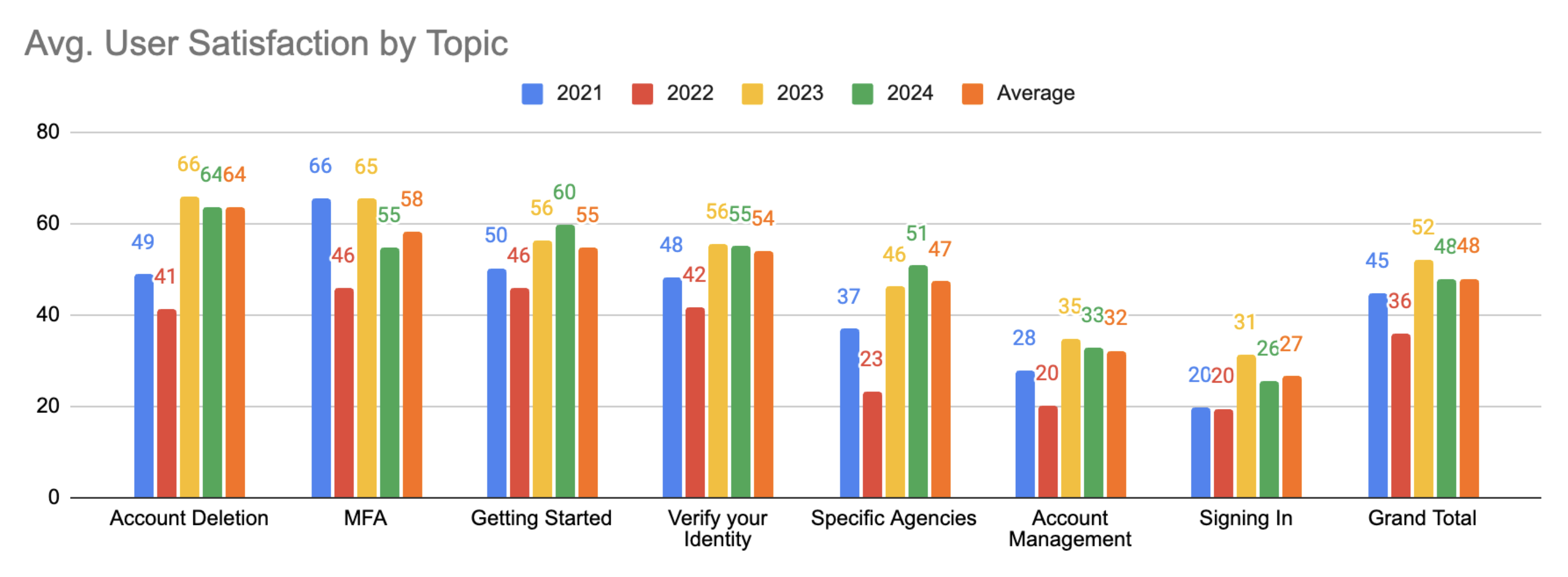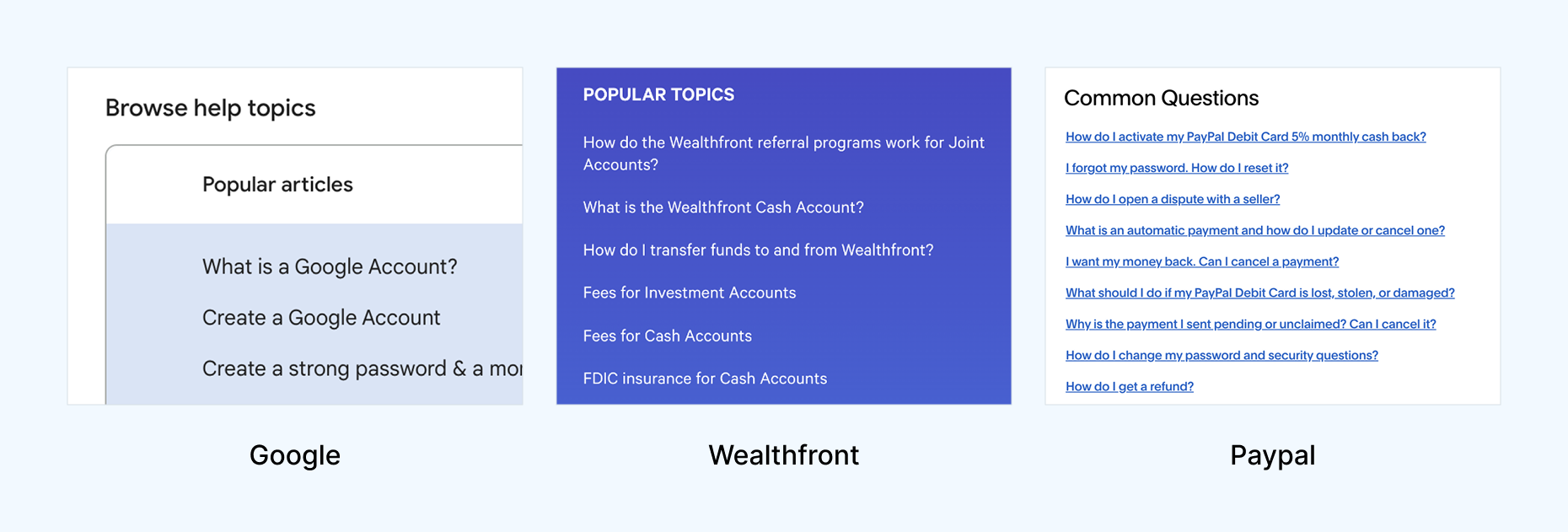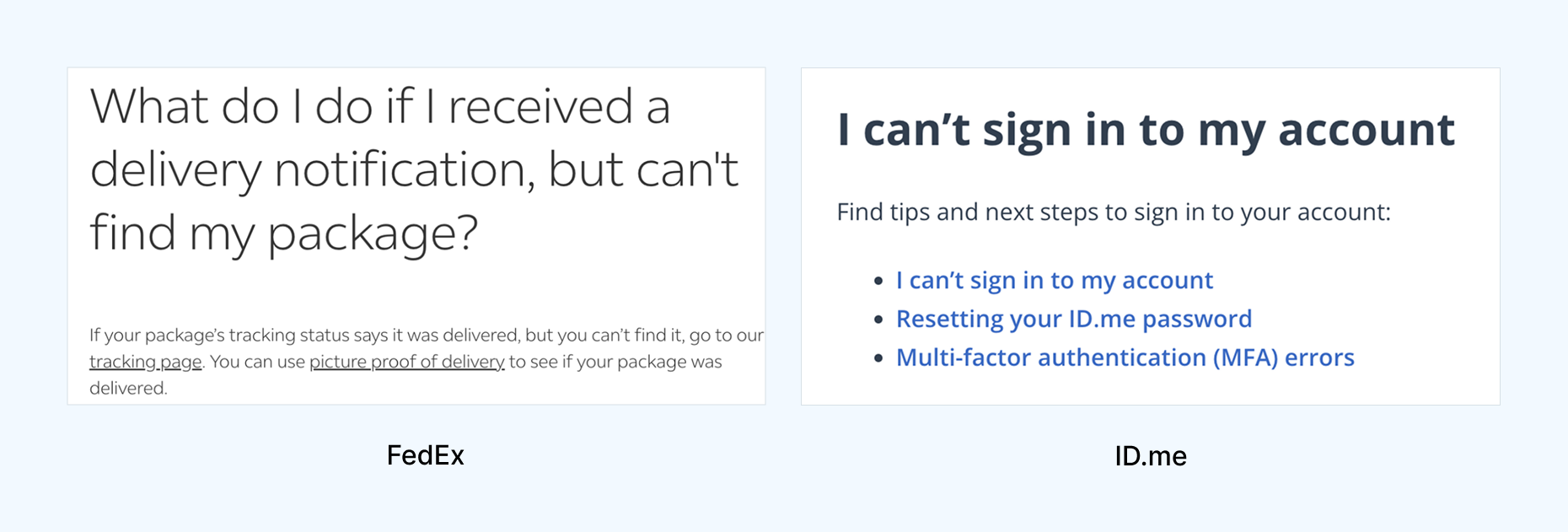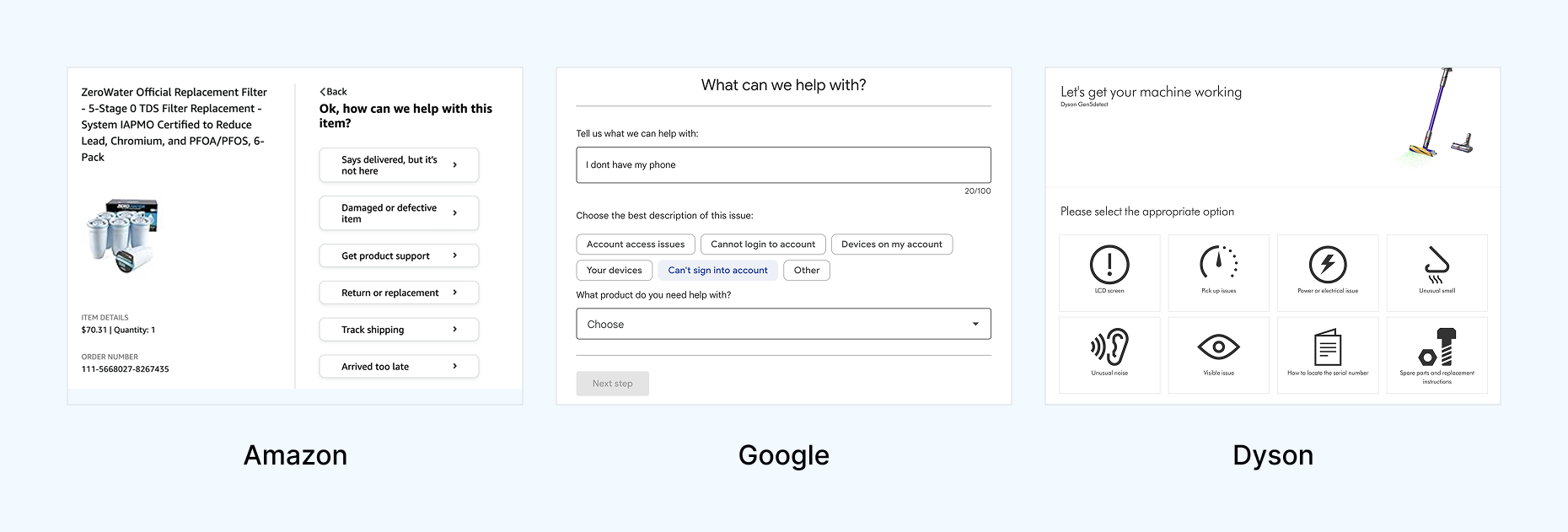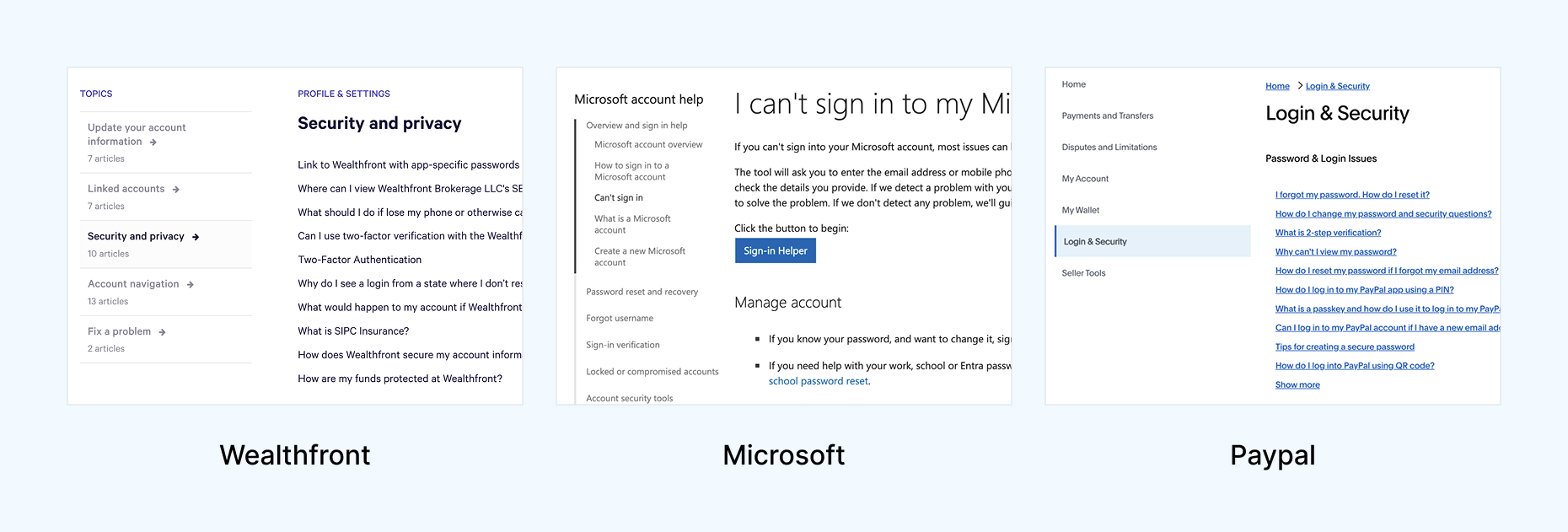Usability Testing Results
We conducted a remote moderated A/B/C usability test with 12 participants on desktops, comparing the existing help center (A) against the two prototypes (B and C). Participants were split into four groups: A/B, B/A, A/C, and C/A. This was done to reduce potential recency bias.
Finding #1: Framing articles as user questions improved clarity and speed
"I feel like I’m on the right page because I see that this is my question."
Takeaway: Titles like “I’m having trouble with face or touch unlock" helped users find the right article faster than generic titles like “Authentication methods.”
Finding #2: Accordion layouts improved scannability
"I like the ability to collapse... looking through 5 or 6 dropdowns makes it easier."
"Long pages are overwhelming—I just scroll and hope something jumps out."
Takeaway: Users preferred content broken into collapsible accordions (Prototype B), which reduced cognitive overload and helped them zero in on relevant solutions.
Finding #3: Users wanted step-by-step troubleshooting, not just definitions
"It’s telling me how to set it up, but not how to troubleshoot."
"What action do I take if I’m having trouble logging in? It just says what it is, not how to fix it."
Takeaway: Users would mistakenly land on irrelevant definitional articles when looking for solutions. Users wanted troubleshooting content to be more prominent and distinct from informational articles. Prototype C had the added benefit of being a dedicated diagnostic flow that users.
Finding #4: Visual aids increased comprehension
"This is the clearest guide I’ve seen for how to take photos of your ID."
"The green ‘do’ and red ‘don’t’ made it super obvious what to do."
Takeaway: Image examples labeled with "Do" and "Don't" captions were well received by participants. Visual communication is
especially helpful for users with limited English or digital literacy.
Finding #5: Left side navigation matched user expectations
"It seems funny that all of these topics are on the right side. I’m used to seeing them on the left."
"Left side nav makes it easier to scan and jump between sections."
Takeaway: The live site’s right side nav was often missed. Left side navigation aligned with USWDS patterns and user mental models.
Finding #6: Both prototypes were preferred over the current experience
"It was easier. You're taking me through the steps to solve my problem instead of leaving me to figure it out."
"I like that I’m not just set free on a website—I’m being guided."
Takeaway: 10 out of 12 users favored the prototypes, noting quicker task resolution and improved ease of use. These insights demonstrated clear advantages of the redesigned prototypes over the existing help center, validating our design hypotheses.
Implementation
After the usability study, the team decided to implement Prototype B's design since it performed the best and could be more easily rolled out in stages.
The redesigned Login.gov Help Center is set for partner preview and phased release in August 2025. Team Annie will look to continued refinement based on user satisfaction scores, clickthrough rates, and any fluctuations in contact center calls by topic.
This redesign let me lead deeply across content strategy, interaction design, and user research. Our comparative analysis and usability testing enabled us to make targeted improvements that helped users get to their answers faster, feel more confident, and reduce the burden on support teams.

